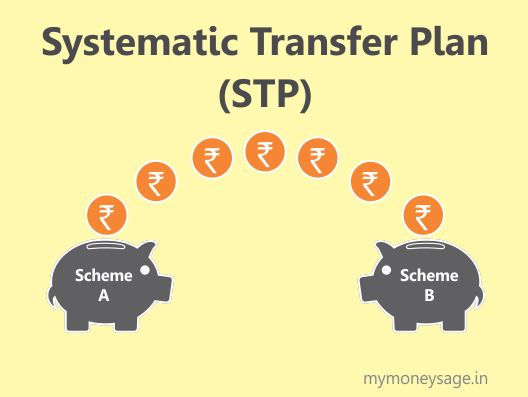
What is STP (Systematic Transfer Plan)?
A systematic transfer plan allows investors to shift their financial resources from one scheme to the other instantaneously and without any hassles. This transfer occurs periodically, enabling investors to gain market advantage by changing to securities when they offer higher returns. It safeguards the interests of an investor during market fluctuations, to minimize the damages incurred.
Types of STP
- Flexible STP- Under this type of systematic transfer plan, the total funds to be transferred is determined by investors as and when the need arises. Depending upon market volatility and calculated predictions about the performance of a scheme, an investor may want to transfer a relatively higher share of his/her existing fund, or vice-versa.
- Fixed STP- In case of a fixed systematic transfer plan, the total amount to be transferred from one Mutual Fund to another remains fixed, as decided by the investor.
- Capital systematic transfer plans- Capital systematic transfer plans transfer the total gains made from market appreciation of a fund to another prospective scheme with a high potential for growth.
Benefits of a Systematic Transfer Plan
- Higher returns- STPs allow you to earn higher returns on your investments by shifting to a more profitable venture during market swings. Gaining market advantage in this method maximizes the profits through securities bought and sold in the capital sector.
- Stability- During times of high degree of volatility in the stock market, investors can transfer their funds via an STP into relatively safer investment schemes such as debt funds and money market instruments. This allows an investor to ensure the safekeeping of his/her financial resources while earning stable returns at the same time.
- Rupee Cost Averaging- This method is implemented while investing in Mutual Funds via STP, allowing investors to lower their average costs incurred on investments. Rupee Cost Averaging follows the technique of investing in funds when their average price is low and selling them when their market value increases, thereby realizing capital gains on the individual securities.
- Optimal balance- Top systematic transfer plans aim to create a portfolio with a mixture of equity and debt instruments, to provide an optimal combination of risk and returns. In the case of risk-averse investors, the transfer of funds is made to mainly debt securities, while equity instruments are meant for investors with an aptitude for risk.
- Taxability- Each transfer under the systematic transfer plan is subjected to tax deductions, provided capital gains are incurred. Redemption of the investment from such Mutual Funds before 3 years makes the gains deductible at 15% under short term gains. Long term capital gains are subject tax deductions but depend upon the annual income of the investor.


